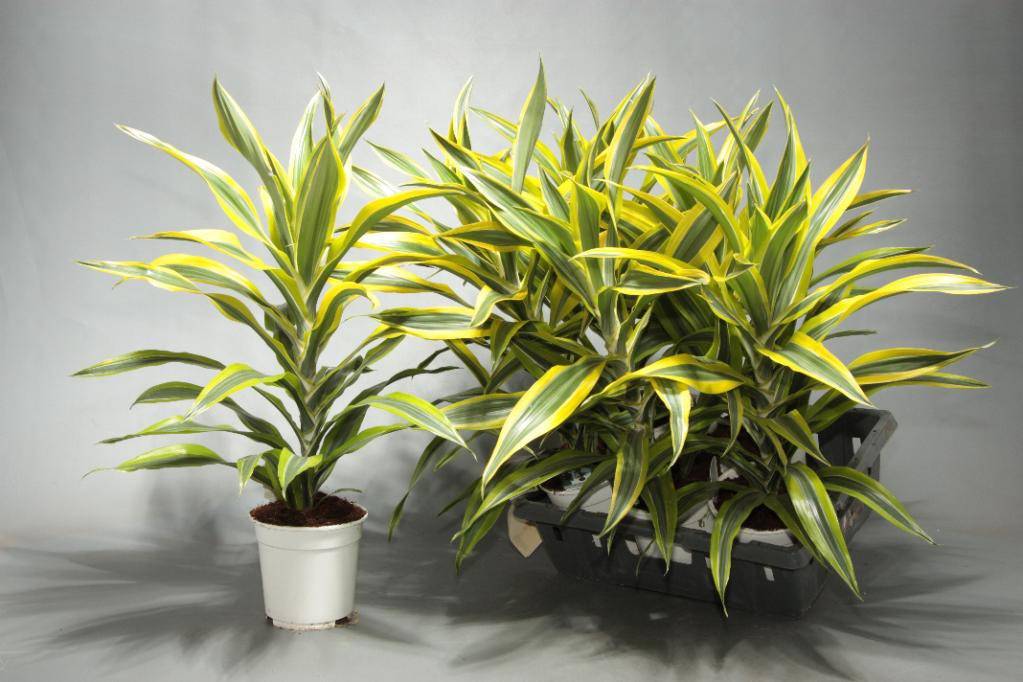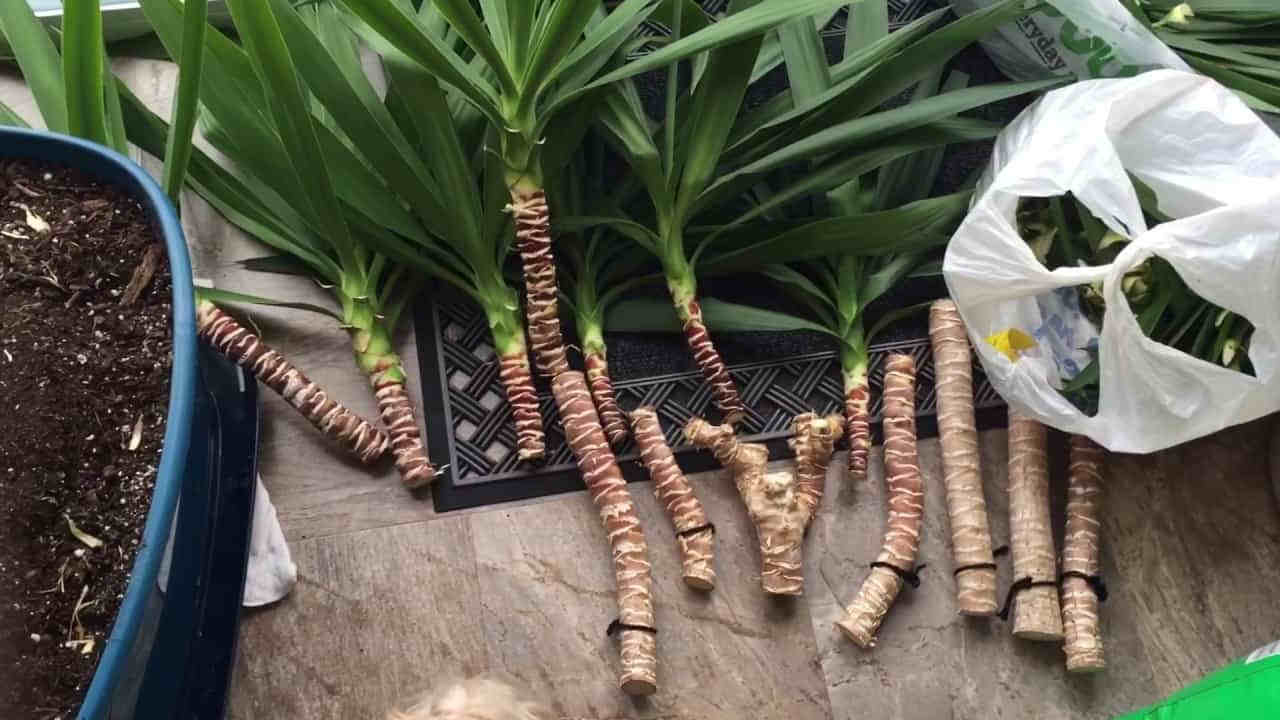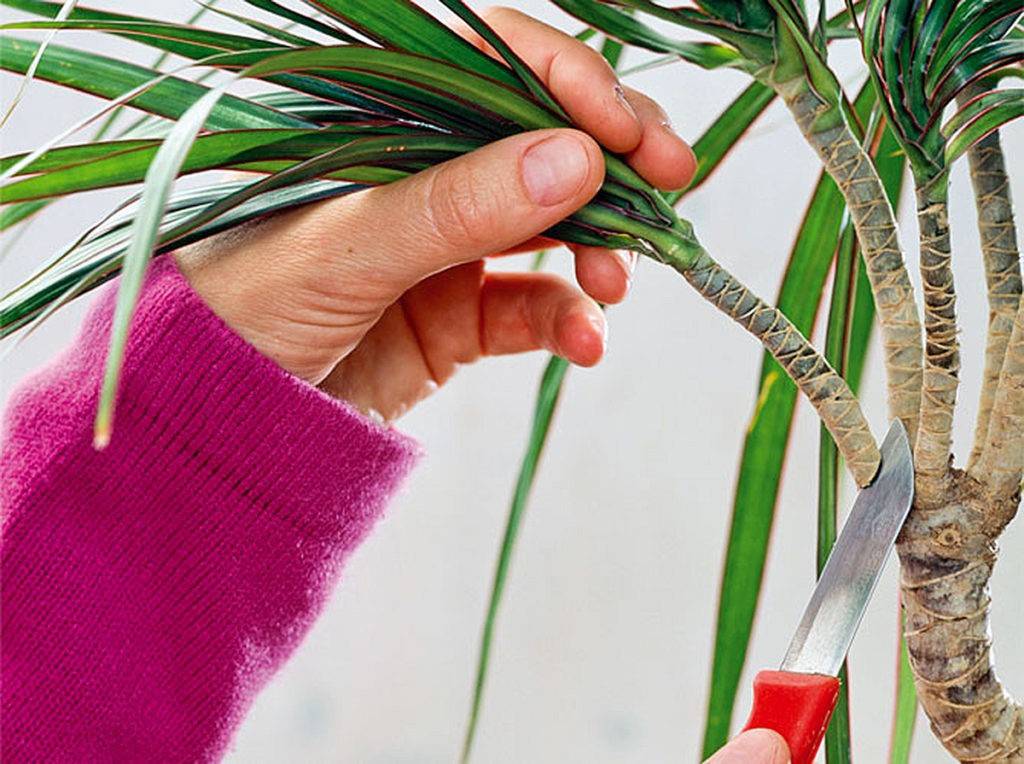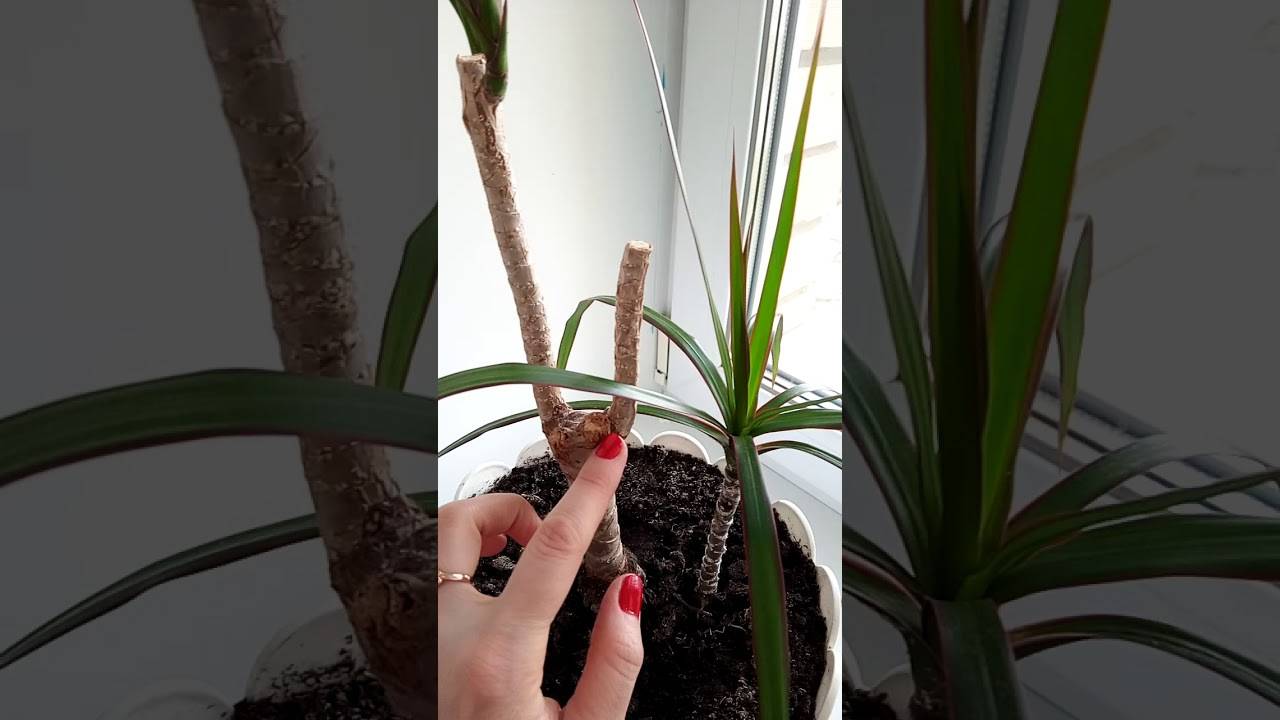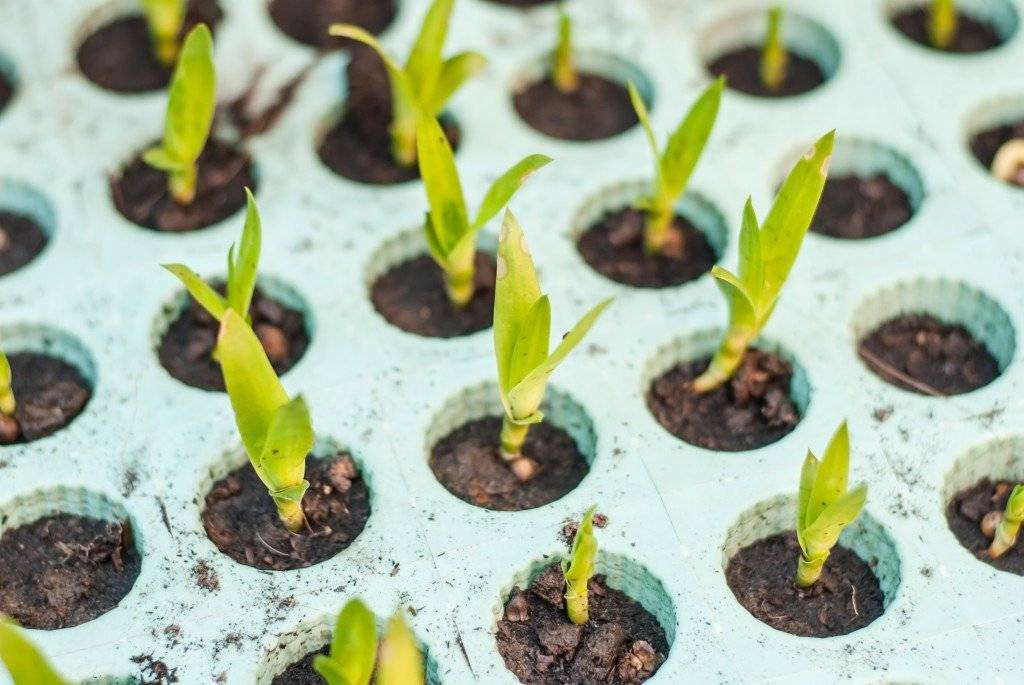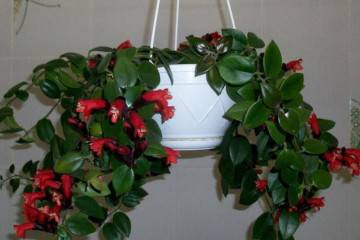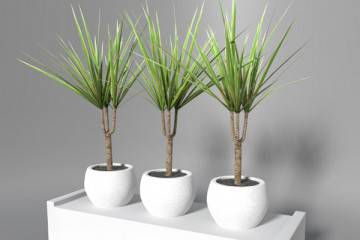Dracaena - breeding at home
Content:
Dracaena is a plant of the asparagus family. In total, more than 100 species of dracaena are known in the world. Wild varieties are often used for medicinal purposes, the juice of the plant has coloring properties. Cultivated dracaena are a wonderful decoration for window sills, balconies and gardens. This deciduous plant takes root well and is easy to care for.
The only problem is the lack of flowering if the plant is grown in a pot, and the rapid loss of its attractive appearance. Transplanting and rejuvenating the plant, as well as growing a new specimen from seeds, air layers or stem cuttings, helps to cope. Below is information on how to propagate dracaena at home, as well as how to take shoots from dracaena.
Dracaena: breeding at home
Dracaena breeding is thought of at the end of winter. But the optimal time for breeding is March-April. The gradually increasing daylight hours have a beneficial effect on the growth and development of a new plant, stimulating it.
Reproduction of a flower in the fall is allowed. But in this case, it will take longer than usual to expect the appearance of young shoots. The plant may require additional growth stimulants, as well as special lighting. Dracaena most often reproduces:
- air layering;
- stem cuttings;
- seeds;
- apical cuttings.
Different types of dracaena reproduce at home in different ways. So, bordered dracaena (the most common type of ornamental plant) propagates by cuttings and layering, but not by seeds, since flowering does not occur under artificially created conditions. Fragrant dracaena blooms, so the seeds can be collected and used to breed a new flower.
When propagating seedlings or thinking about how to plant dracaena for the first time, in any of the mentioned ways, take into account the possibility:
- rotting of cuttings (if the soil is too wet or the soil mixture is not suitable for a particular plant, then there is a risk of rotting of that part of the cuttings that is stuck in the ground, but has not yet had time to overgrow with roots);
- lack of seedlings (usually the first shoots when growing a flower from seeds appear after 1-2 months, but if the growing conditions do not meet the required ones, then the process can be delayed);
- the absence of lateral shoots in the mother flower (if the grower who cut the stem from the mother plant for its subsequent rooting, forgot to wrap the cut with a plastic bag, then the adult plant will not give young shoots, it may dry out).
The problem with rotting cuttings is solved by simply removing the rotted part and transplanting the cuttings into new soil. You can throw away the container with unripe seeds after 5-6 months. If seedlings have not appeared before this time, then the seeds were spoiled or too old. It is not easy to find fresh seeds in the store.
Getting seedlings by air layering
This method of obtaining young seedlings is suitable exclusively for experienced flower growers. To propagate a flower:
- make a cross-section on the stem;
- a match is inserted into the resulting crack (this will not allow it to overgrow);
- the trunk along the perimeter of the cut is wrapped with sphagnum moss and covered with a film;
- spray the moss with water.
After 1-2 months, roots should sprout through the moss. As soon as this happens, the film is removed, the stem is cut in two, being careful not to damage the still weak roots.If you are lucky, then over the past time, new shoots appear on the stem below the cut. Subsequently, they turn into young trunks (the rejuvenation of the old flower occurs).
A sprout with roots is planted in the ground for adult plants. The top of the pot is covered with a film, creating conditions close to greenhouse ones (instead of a film, you can use a glass jar). The seedling should be in an improvised greenhouse for 1 week. Every day, the film or glass is removed for 10-15 minutes. If the earth has time to dry out, then it is sprayed, but not watered, a slight moisture is enough.
With proper care, a plant propagated by air layers grows faster than one propagated by cuttings or seeds. Saplings are fed:
- nitrogen (necessary for the accelerated development of leaves);
- phosphorus (affects the rate of root formation and the size of the root system);
- potassium (increases the flower's resistance to various diseases and pests).
Substances such as manganese, magnesium, zinc, molybdenum and cobalt are considered no less useful and necessary for the full development of dracaena. So, if a young shoot lacks calcium, then the barely erupted shoots curl, become thinner, become pale. With a lack of phosphorus, the leaves are covered with brown or red spots. Lack of boron in the soil leads to the fact that at a certain point young shoots stop growing.
Experienced flower growers use fertilizers such as:
- "Ideal";
- "Stimulus";
- "Giant";
- "Master".
For spraying, concentrated solutions based on potassium nitrate (1 g), ammonium sulfate (0.6 g) and potassium phosphate (0.4 g) are used. The substances are mixed with each other and dissolved in 2 liters. water.
Breeding with apical cuttings
An adult dracaena, which has lost its attractive appearance, can be updated by growing a younger plant from it, or by breeding several new ones. For this:
- the top of the flower, together with the leaves and part of the stem, is cut off (a sharp knife is used, the length of the stem is about 15-20 cm from the last leaf);
- the stem is freed from the leaves;
- leave the bare trunk for 2-3 hours somewhere on the windowsill so that the stem dries up;
- place the stem in a vase of water, adding a root growth stimulator and a little peat to it (should stand in water for 1 week or more).
For rooting, they also use:
- a mixture of coal, sand and peat (coal is crushed to the state of a powdery mass);
- perlite or vermiculite;
- steamed soil suitable for palm trees (available from your specialist flower shop).
In order for rooting to occur in the near future, the seedling planted in the ground is covered with a film (a regular plastic bag will do just fine). The humidity inside the greenhouse is regulated by periodically airing it (1-2 times a day the film is removed, the plant is left in this position for 15-20 minutes).
The seedling is regularly watered, and even better sprayed (as soon as the topsoil dries up). But dracaena does not like excessive moisture, so 1-2 waterings per week are enough, no more. After the appearance of the first leaves, it is better to transplant the flower into a special pot, in which watering can be regulated using a special device. Such a device consists of tubes and capsules, with the help of which you can create something like a float that responds to the level of water in a pot. Thanks to the "float", it is possible to regulate the humidity in the pot with dracaena, which will not allow the soil to sour, and the plant itself - to rot.
For irrigation, they use warm, settled water (the water temperature is not lower than 20-22 degrees Celsius).
It is covered with a bag and placed in a warm, regularly, but in moderation, watering. Since the plant remains viable despite the loss of foliage, young shoots will appear on the bare trunk after 1-1.5 months. Thus, it is possible to get two young flowers at once, while the old plant from which the future seedling was cut will give out several stems at once, which means that after a while one of them can be cut off and also rooted.
Stem cuttings
A healthy stem left after trimming the dracaena is divided into 2-3 parts, each 10-15 cm long. The cut should take place at the point of attachment of the sheet. The cut should be straight, neat and clean. Before cutting the stem, the knife is wiped dry, disinfected with a solution of potassium permanganate. If the stem is rotten inside, there are chips and cracks, then you cannot use it for rooting, since the seedling will turn out to be weak and unviable.
Stem cuttings are rooted in the same way as cuttings cut from the top. But if, in the case of apical cuttings, the seedling is planted vertically in the soil, then with stem cuttings the cuttings can be placed in the ground in a horizontal position. This will require a large pot with a diameter of 20-25 cm and soil for rooting. The stem is laid horizontally on the ground and pressed a little on it; you do not need to sprinkle it on top with earth. Before rooting, the soil is watered abundantly, the earth should be soft, otherwise it will not work to press the stem gently without damaging it.
If you cut the stem using the apical method, then the roots appear immediately, but the leaves and stems are not to be expected soon. Dracaena stem propagation allows you to solve this problem. On a rooted stem, not only roots appear, but also new young stems. Roots appear in 1-1.5 months, and the first shoots in 2-2.5 months after placing a part of the mother stem in the ground. The described method of propagation by stem cuttings is considered the simplest and most reliable.
How to propagate dracaena by seeds
Dracaena planted in closed ground rarely bloom, some species cannot bloom at all in conditions artificially created for them. The same plants that do bloom form buds no earlier than 10 years after planting in the ground. Since it is not easy to find a ten-year-old plant, dracaena seeds are also considered very rare. Only freshly harvested seeds are suitable for reproduction, which:
- cleaned from the remnants of the fetus;
- stand for 15 minutes in a growth stimulator;
- sowed into a wet sand-peat mixture;
- sprinkle with earth on top, no more than 1 cm;
- cover with a film or jar and leave until germination.
Before the first shoots appear, the film is removed only for airing and watering, but no more than 20 minutes a day.
Cold air should not get under the film; if possible, they also try to prevent the formation of condensation. The first shoots will appear no earlier than 1 month later. After that, the film or jar is removed, leaving the sprouts to get used to the new conditions for another 2-3 weeks. Fortified plants dive, at the same time they can be planted in separate pots.
It is easiest to propagate dracaena by seeds, so if the grower has good quality planting material, it should be used for its intended purpose.
Seedlings grown from seeds:
- often sprayed, using, among other things, fertilizer solutions (the frequency of spraying is 1-2 times a week);
- ventilated regularly (if the seedlings are still growing in greenhouse conditions).
After the emergence of shoots, the container with the plants is removed in the shade, the dracaena are brought out into the light after 3-4 weeks. This will stimulate the growth of the flower without the use of additional funds.
Seeds do not need to be planted directly into the ground. To speed up the germination process, before planting, all seeds:
- placed in a clean napkin soaked in water, carefully ensuring that at least a minimum distance is maintained between individual seeds;
- a little water is poured into the bottom of a flat container and a napkin with seeds is placed in it;
- after 1-2 weeks, the napkin is unrolled and the result is monitored (this time in most cases is sufficient for germination).
Sprouted seeds are planted in the ground and wait for the sprouts to appear. The ideal soil is a mixture of sand, earth and vermiculite, but you can also use soil that is exclusively for palm plants.
Not knowing how the dracaena multiplies, how to root the plant correctly, whether it is worth the risk and planting flower seeds in the ground, it is best to carefully read the information provided. Incorrect and untimely cutting of the stem leads to the death, including of an adult plant. With any method of reproduction, it is best to use growth stimulants. This will increase the chances of getting a new young plant after 1-2 months. For reproduction of dracaena, they most often use lateral or upper stems, less often seeds, since this type of plant blooms very rarely, and in conditions of limited space - almost never (seeds are not stored for long, quickly losing their ability to germinate).
